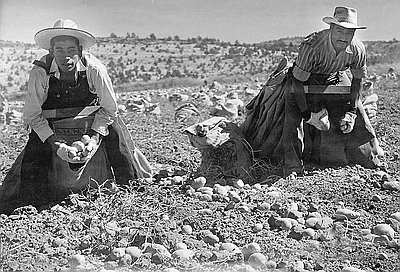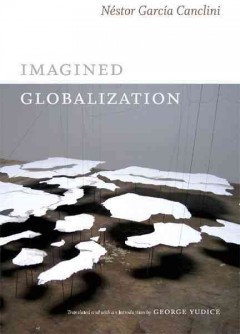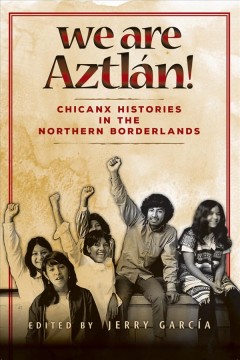Latinx Immigration and Migration
The Latinx community makes up the largest population of immigrants in Oregon making up 14% of the state's population as of 2022. Throughout history Latinx immigrants have been a very crucial factor to life in Oregon and helped to form it into the state it is today. This page explains how and why Latinx people came to Oregon, their experiences, and the Latinx populations over time.
*This guide was made by Dr. Jessie Herrada Nance and Tori Stanek's WR 123 Research Writing class. The section on Latinx migration and immigration was compiled by Finley Sader.

- The Mexican Revolution in 1910 sparked one of the first groups of Latinx immigrants to come to Oregon in search of labor and economic opportunities.
- One of the main factors in Latinx migration to the U.S, specifically the Gorge area, was due to the labor opportunities through agriculture and railroad work. This began between the 1900’s and 1920’s.
- The Bracero Program which was formed in 1942 brought approximately 15,000 Latinx laborers to Oregon. This was a result of the increase of demand for labor during WWII and lasted until 1947. This allowed for some Latinx families to claim permanent residence in Oregon.
- With the growth of economic opportunity, Latinx people were able to branch into more occupations besides farm work including manufacturing, businesses, and construction. This increased the migration rates to Oregon providing a more stable life (University of Oregon, 2008)
- According to the U.S. Census Bureau in Oregon, as of July 1, 2022, 14% of people in the state of Oregon identify as Hispanic or Latinx. This number has largely increased over the past decades and continues to grow each year.
- Around 90% of Latinxs living in Oregon claim roots in Mexico, with the remaining coming from countries in Central and South America including Puerto Rico, Cuba, Guatemala, Spain, and El Salvador. To see more information check out the Mapping the Latinx Great Migrations interactive website.
- One of the largest increases in Latinx population was seen between the 1980s and the 1990s, with an increase of 70% (Garcia, 2022).
- One of the main causes for Latinx growth was from immigrants settling into small communities and rural towns, and then bringing over their families. They were then able to create a foundation and create new generations.
- Through the Immigration and Reform Act passed in 1986, as well the Seasonal Agricultural Workers program, approximately 23,736 Latinx were granted legal residency in Oregon which allowed family members to join increasing populations.
- Latinx immigrants faced multiple obstacles while trying to make a living and were discriminated against. In the early years of migration Latinx were viewed as essential for labor purposes, but frowned upon in the economic and social aspect of Oregon.
- Multiple actions were taken to prevent and control migration including the “Operation Wet***k” that took place throughout the 1950s which aimed to prevent undocumented immigration and deport those found undocumented (Garcia, 2022).
- Though facing discrimination, multiple organizations were created to help improve Latinx life such as the Valley Migrant League which provided opportunities to Latinxs such as day care, citizenship, education programs, etc.
- Farmers created unions such as Pineros y Campesinos Unidos del Noroeste (PCUN) which advocated for latinx immigrant workers providing safety, connections, and opportunities to pursue better living conditions. They were able to form a united front to fight back against discrimination.
- Racism and discrimination were and continue to be one of the biggest setbacks for Latinx immigrants through stereotypes that prevent them from being able to succeed. Latinx immigrants are often viewed as criminals and bad for society. This made it harder to succeed in finding stable income as well as overall treatment in public including school and leisurely activities.
- Latinx immigrants also face financial obstacles through income struggles, lack of health insurance, and resources. Due to their status they face an income gap and often struggle to find successful job opportunities.
- Latinx immigrant families also struggle with adapting to their new culture which can cause a strain of family relationships. One example of this is acculturation in which immigrant children adapt to their new culture much quicker than their parents impacting their relationships.

Image: Valley Migrant League recreational event Courtesy Oreg. Hist. Soc. Research Library

- Imagined Globalization, García Canclini, Nestór
In this book, Néstor García Canclini considers how globalization is imagined by artists, academics, migrants, and entrepreneurs, all of whom traverse boundaries and, at times, engage in conflicted or negotiated multicultural interactions. -
Hybrid Cultures: Strategies for Entering and Leaving Modernity, García Canclini, Nestór
"El libro es una especie de sociología de la cultura aplicada a América Latina. Aunque los temas son muy concretos, el enfoque del autor tiende a ser filosófico. Tradición y modernidad son los dos ejes de la obra, pero esta caracterización dista mucho de captar toda su complejidad"--Handbook of Latin American Studies, v. 58.

-
In The Country We Love: My Family Divided, Guerrero, Diane
"Diane Guerrero, the television actress from Orange is the New Black and Jane the Virgin, was just fourteen years old on the day her parents and brother were arrested and deported to Colombia while she was at school. Born in the U.S., Guerrero was able to remain in the country and continue her education, depending on the kindness of family friends who took her in and helped her build a life and a successful acting career for herself, without the support system of her family. "In the Country We Love" is a moving, heartbreaking story of one woman's extraordinary resilience in the face of the nightmarish struggles of undocumented residents in this country"-- Provided by publisher. -
Borderlands: The New Mestiza, Anzaldúa, Gloria
Borderlands/La Frontera: The New Mestiza is a 1987 semi-autobiographical work by Gloria E. Anzaldúa that examines the Chicano and Latino experience through the lens of issues such as gender, identity, race, and colonialism.

-
We Are Aztlán!: Chicanx Histories on the Northern Borderlands, García, Jerry
"Mexican Americans/Chicana/os/Chicanx form a majority of the overall Latino population in the United States. In this collection, established and emerging Chicanx researchers diverge from the discipline's traditional Southwest focus to offer academic and non-academic perspectives specifically on the Pacific Northwest and the Midwest. Their multidisciplinary papers address colonialism, gender, history, immigration, labor, literature, sociology, education, and religion, setting El Movimiento (the Chicanx movement) and the Chicanx experience beyond customary scholarship and illuminating how Chicanxs have challenged racialization, marginalization, and isolation in the northern borderlands."--Provided by publisher. -
The Wind That Swept Mexico: The History of the Mexican Revolution of 1910-1942, Brenner, Anita and Leighton, George Ross
The Mexican Revolution began in 1910 with the overthrow of dictator Porfirio Díaz. "The Wind That Swept Mexico," originally published in 1943, was the first book to present a broad account of that revolution in its several different phases. In concise but moving words and in memorable photographs, this classic sweeps the reader along from the false peace and plenty of the Díaz era through the doomed administration of Madero, the chaotic years of Villa and Zapata, Carranza and Obregón, to the peaceful social revolution of Cárdenas and Mexico's entry into World War II.
Garcia, Jerry. “Latinos in Oregon.” The Oregon Encyclopedia, 14 Oct. 2022,
This article seeks to provide an in depth history of the Latino community in Oregon, and how they experienced life. Through the use of of statistics and percentages as well as a chronological timeline (16th-century to present day) of Latino migration and experiences in Oregon, Garcia informs reader factors causing Latinos to migrate such as labor opportunities and citizenship programs, the obstacles they faced while developing into society, and how/why they grew in population.
Garcia, Jerry. “Bracero Program.” The Oregon Encyclopedia, 7 Apr. 2023,
This article provides an in depth description of the Bracero Program and how it impacted migrant workers' lives in Oregon. The article provides the historical making of the program, including why it was created, how it was used, and what it did for Latinx people searching for work.
This interactive website provides a historical overview of Latinx migration to the US including population and demographics. Users are able to view population statistics from each state and decade ranging from 1850 to present day. This site also includes national backgrounds for each year allowing users to dive deeper into the migration aspect of the populations.
This journal article strives to explain the history of the Bracero Program and how it affected the Latinx immigrants who were a part of it. The journal looks at the historical aspect of the program and how it operated, as well as focusing on the experiences and obstacles the Latinx immigrants faced through the program. Mandeel debates the impact of the bracero program and on the US economy while also thoroughly explaining what it was and how it worked.
This journal article provides an overview of the Immigration Reform Act of 1986 and how it affected migrant workers in the United States. This article outlines what the Immigration Reform act is, what it does, and the impact it had on undocumented workers. Robinson and Gilbertson aimed to explain all aspects of this act and what it would do for migrant workers.
This document allows viewers to understand what the Migrant and Seasonal Agricultural Worker Protection Act was, and how it affected migrant workers. It breaks down the act into different sections describing its purposes, requirements, information, and definitions. This document provides a clear basis of what this act was and how it was used during the time period.
Tucker, Kathy. “Valley Migrant League.” The Oregon Encyclopedia, 14 Oct. 2022,
This article seeks to explain the Valley Migrant League in Oregon and how it helped migrant workers and families. The article provides an outline of how the Valley Migrant League worked throughout its course, and mentions significant members of the group and how they worked to improve life for the migrant workers. Tucker explains how important this group was up until its end in 1974 when it converted to the Oregon Rural Opportunities group.
This research report discusses the experiences of immigrants in the United States as a whole with an emphasis on why they migrated and how they integrated into American culture. The article focuses on multiple minority groups in America and how they came to be through presenting statistics, interviews, and historical information about each group with an emphasis on the Latino community. Not only does it provide the history of these groups, but also proposes solutions to help these minority groups to live a better life in America.
“U.S. Census Bureau Quickfacts: Oregon.” The United States Census Bureau,
The U.S Census Bureau provides in depth statistics on the population of Oregon. Of the total population, the census is able to categorize the population through different groups such as race and hispanic origin, age and sex, and other characteristics